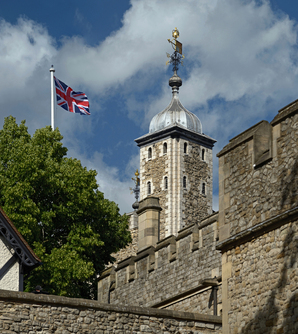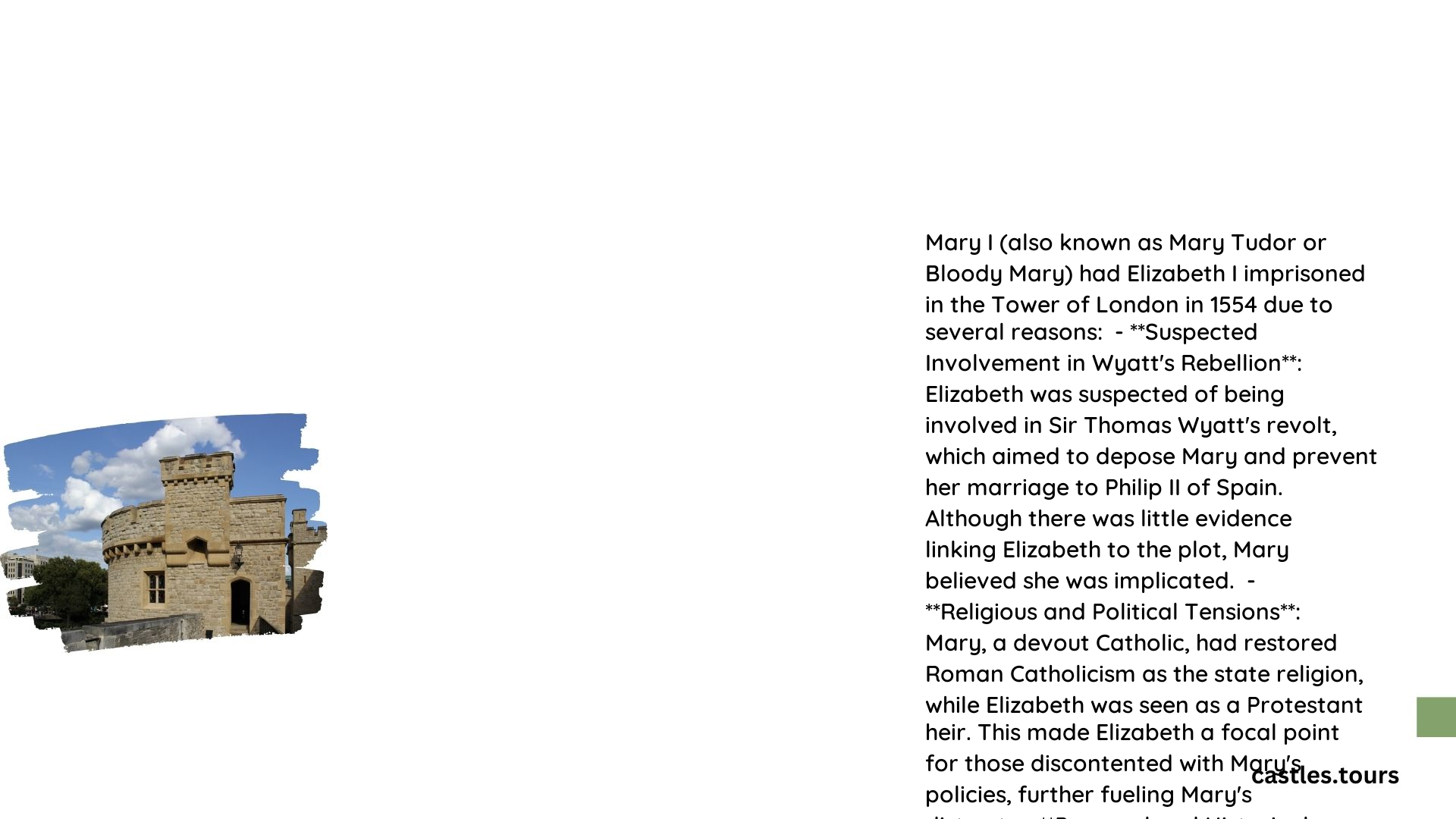Mary I imprisoned Elizabeth I in the Tower of London due to political rivalry, religious tensions, and succession concerns. As a Catholic monarch, Mary saw Protestant Elizabeth as a threat to her rule and religious reforms. The imprisonment followed Wyatt’s Rebellion in 1554, which aimed to prevent Mary’s marriage to Philip of Spain and place Elizabeth on the throne. This action highlighted the deep divisions within the Tudor dynasty and set the stage for Elizabeth’s eventual rise to power.
What Were the Key Factors Behind Mary’s Decision?

Political Rivalry and Succession Concerns
The decision to imprison Elizabeth stemmed from a complex web of political and dynastic issues:
- Rival claims to the throne
- Religious differences
- Fear of Protestant support for Elizabeth
- Mary’s lack of an heir
Mary, as a Catholic monarch, viewed Elizabeth’s Protestant faith as a direct challenge to her efforts to restore Catholicism in England. The absence of a clear Catholic heir further intensified Mary’s concerns about Elizabeth’s potential claim to the throne.
How Did Wyatt’s Rebellion Influence Mary’s Actions?
Wyatt’s Rebellion in 1554 played a crucial role in Elizabeth’s imprisonment:
- Rebellion’s Aim: To prevent Mary’s marriage to Philip of Spain
- Elizabeth’s Alleged Involvement: Though not directly implicated, her association with rebels raised suspicions
- Timing: Elizabeth’s arrest and imprisonment followed shortly after the rebellion’s suppression
The rebellion heightened Mary’s fears of Protestant opposition and strengthened her resolve to neutralize potential threats to her rule.
What Were the Religious Tensions at Play?
The religious landscape of England during Mary’s reign was fraught with conflict:
| Aspect | Mary I | Elizabeth I |
|---|---|---|
| Faith | Catholic | Protestant |
| Religious Policy | Restoration of Catholicism | Sympathetic to Protestantism |
| Public Perception | “Bloody Mary” due to Protestant persecutions | Seen as a Protestant hope |
These stark differences in faith and policy made Elizabeth a natural focal point for Protestant resistance to Mary’s Catholic reforms.
How Long Was Elizabeth Imprisoned and Under What Conditions?

Elizabeth’s confinement in the Tower of London lasted approximately two months, from March to May 1554. The conditions of her imprisonment were characterized by:
- Constant surveillance
- Regular interrogations
- Limited access to visitors
- Uncertainty about her fate
Despite the harsh circumstances, Elizabeth managed to maintain her composure and deny any involvement in plots against Mary.
What Evidence Did Mary Have Against Elizabeth?
Mary’s case against Elizabeth was largely circumstantial:
- Elizabeth’s Protestant faith
- Her popularity among Protestant subjects
- Associations with individuals implicated in Wyatt’s Rebellion
- Suspicions of her involvement in anti-Mary plots
The lack of concrete evidence linking Elizabeth directly to treasonous activities ultimately led to her release from the Tower and transfer to house arrest at Woodstock Palace.
What Were the Long-Term Implications of Elizabeth’s Imprisonment?
Elizabeth’s time in the Tower had far-reaching consequences:
- Solidified her image as a Protestant martyr
- Increased her popularity among anti-Catholic factions
- Provided her with valuable political experience
- Set the stage for her eventual accession to the throne
The imprisonment, rather than weakening Elizabeth’s position, ultimately strengthened her claim as a viable alternative to Mary’s rule.
How Did This Event Shape the Tudor Dynasty?
The imprisonment of Elizabeth highlighted several key aspects of the Tudor era:
- Deep religious divisions within the royal family
- The precarious nature of royal succession
- The intertwining of religion and politics in Tudor England
- The resilience of Elizabeth, foreshadowing her future reign
This event became a pivotal moment in Tudor history, illustrating the complex dynamics that would shape England’s future under Elizabeth I’s rule.
What Can We Learn from Mary’s Decision to Imprison Elizabeth?
Mary’s actions reveal several important lessons:
- The power of religious ideology in shaping political decisions
- The dangers of perceived threats to monarchical authority
- The importance of concrete evidence in political prosecutions
- The potential for imprisonment to backfire and create martyrs
These insights provide valuable context for understanding the tumultuous nature of Tudor politics and the challenges faced by monarchs in maintaining their power.
In conclusion, Mary’s decision to imprison Elizabeth in the Tower of London was a product of political rivalry, religious tensions, and dynastic concerns. While intended to neutralize a perceived threat, it ultimately contributed to Elizabeth’s eventual rise to power and the establishment of a Protestant England.
References:
1. The Royal Family: Elizabeth I (r.1558-1603)
2. Britannica: What were the biggest issues facing England during Queen Elizabeth I’s reign
3. Royal Museums Greenwich: Elizabeth I and Mary, Queen of Scots
